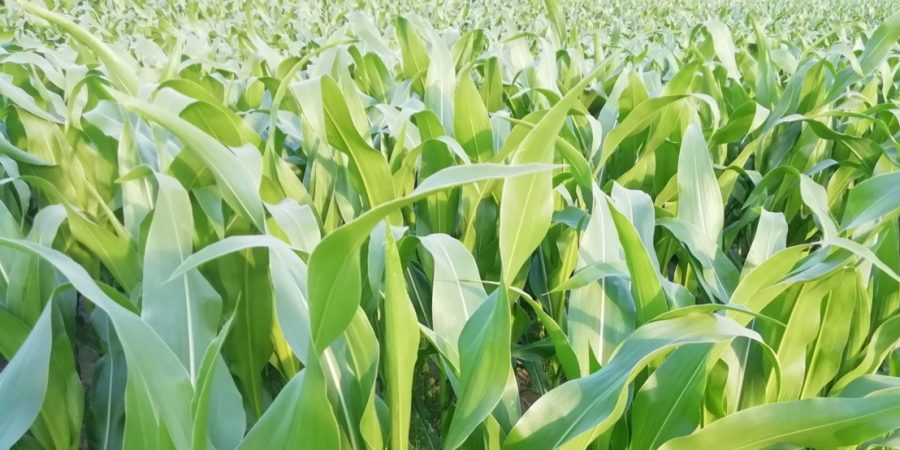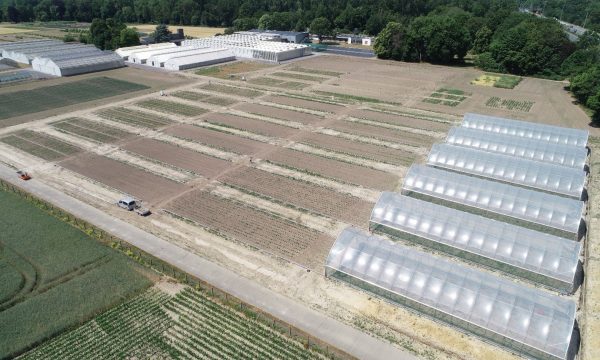Press release Climate-adaptive farming practices push to reduce fertilizer losses in agricultural soils

Climate change in Flanders will lead to wetter winters, drier summers and higher temperatures, characterized by more extremes. This can lead to higher losses of fertilizers to ground and surface water in several ways. This is the conclusion of a literature review commissioned by the VLM and conducted by researchers from the Soil Science Department of Belgium (BDB) and the Institute for Agricultural, Fisheries and Food Research (ILVO). The VLM and the researchers are therefore calling on farmers to adopt climate-adaptive practices - a combination of measures and innovations - to ensure that manure does not leach or volatilize.
Impact of weather on crop development
Drought and higher temperatures in summer can inhibit crop development. Especially if the drought and heat coincide with the plant's flowering phase. Because crops grow more slowly, they will make less use of the fertilizers present in the soil. This can leave a higher nitrate residue at the end of the growing season, with an increased risk of fertilizer leaching into ground and surface water. Wetter winters can also lead to a higher risk of fertilizer losses.
What measures do experts prioritize?
A workshop with experts from VLM, BDB, ILVO (Center of Expertise for Agriculture and Climate) and the Flemish experimental stations, followed by an extensive literature study, yielded several ideas to further reduce fertilizer losses with a changing climate. These include improving fertilization practices according to the 4 R's (right dose, right technique, right time and right amount), focusing on good soil quality and tinkering with feed rations.
With the following and other principles in mind, fertilizer losses can be reduced:
- Administering the total nitrogen fertilization in several doses (supplemental fertilization or fractioning) offers the possibility to fertilize better according to the crop development and respond to growth and weather conditions. The basic fertilization is limited, and then nitrogen is applied just before the "growth spurt" tailored to the field and the crop. The farmer can find out how much nitrogen to apply with a nitrogen supplementation recommendation.
- Irrigation during drought periods can provide better nitrogen utilization and, consequently, lower nitrogen residue and therefore less risk of nitrogen losses. Unfortunately, not all regions in Flanders have sufficient water resources to apply this.
- The predicted wetter winters will increase the importance of catch crops. Higher temperatures in autumn and winter can lead to better development and longer growth of catch crops. However, day length will not change, so timely sowing of catch crops remains essential. To capture early mineralization of dead catch crops, a combination of frost and non-frost sensitive crops can be used. Catch crops also contribute to climate mitigation by reducing N2O emissions (nitrous oxide) and by contributing to carbon storage in the soil.
- Adaptations to existing stables and manure storage facilities, or new low emission installations, will reduce emissions of ammonia, nitrous oxide and methane and therefore also have a potential in climate mitigation. Existing techniques can be applied even more widely to mitigate the effects of higher temperatures and of peak rains and wetter winters, such as reducing and shortening the contact between the air and the manure, washing the stable air, enclosed external manure storages and leak detection.
- Sufficient manure storage capacity (larger silos) is important so that manure can be spread when the right time is there, rather than when the manure silo is full.
- The researchers from the Soil Science Service of Belgium and ILVO drew up a code of good fertilization practices specifically for potatoes and maize.
Innovative solutions offer perspective
Some of the the promising solutions that emerged from the literature review:
- Leguminous crops, thanks to their nitrogen fixation, have great potential to reduce nitrogen fertilization and also nitrogen losses. After all, they fix nitrogen from the air and therefore require less nitrogen fertilization.
- By focusing on soil quality, the crop becomes more resilient in extreme weather conditions.
- Precision agriculture techniques can help to use energy and fertilizers more efficiently.
- In the livestock sector, nitrogen emissions from ruminants can still be greatly reduced by tinkering with rations (e.g. by better matching the protein supply in the ration to the animal's needs).
Some of the innovations described are not yet ready for implementation in practice. In those cases, there is still a way to go before they can be widely applied. However, by continuing to work on improving soil quality and applying the right fertilization practices and techniques, farmers can already respond to the changing climate while reducing their fertilizer losses.


